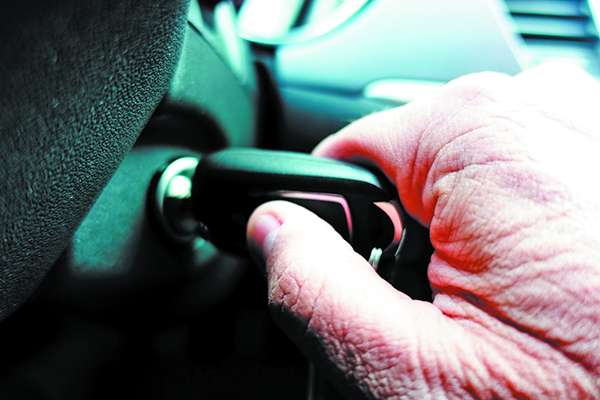Many new kinds of safety features, such as automatic emergency braking, blind-spot monitoring and lane-departure warning, are being added to new cars as standard or optional equipment. But a new study sponsored by the AAA Foundation for Traffic Safety shows that many vehicle owners who have these features don’t understand them—and could be putting themselves in harm’s way by failing to grasp their functions and limitations.
For instance, nearly half of drivers with vehicles that have blind-spot monitoring (which detects other vehicles that are in a lane to the left or right of the driver’s lane near the rear of the driver’s vehicle) thought the system could do things that it can’t do. These respondents either stated that such systems consistently detect motorcycles, bicycles and pedestrians…or stated that they monitor the roadway directly behind the vehicle. They do not. And only one in five respondents correctly stated that the system is not designed to detect vehicles passing at extremely fast speeds.
Only about two-thirds of drivers whose vehicles are equipped with automatic emergency braking, which can apply brakes automatically if a collision seems imminent, were aware that the system could be rendered useless if their sensors and/or cameras were obscured by dirt, ice or snow. And nearly 30% of drivers with forward collision warning systems incorrectly stated that these systems could automatically apply brakes when the vehicle is too close to the vehicle ahead. (Such systems deliver only a warning signal.)
A lack of understanding about these advanced driver-assistance systems is fostering some unwise, even dangerous driving habits.
One-quarter of those surveyed who have rear cross-traffic alert systems said they feel so confident in this feature that they sometimes, frequently or often do not look behind their vehicles before backing up. This is a gross overreliance on the system, which monitors for slow-moving vehicles approaching behind your vehicle from the right or left as you back up.
Of course, even if a driver understands a safety device, it can be useful only if it is functioning. And yet more than 40% of owners with lane-departure assistance said they had deactivated these systems, in most cases because they felt that repeated warnings were annoying.
There’s certainly cause for concern on the nation’s roadways. In 2016, despite the numerous new advanced safety systems in many vehicles, more than 37,400 people were killed in motor vehicle crashes. That represents a 14% increase from 2014, according to the National Highway Traffic Safety Administration.
There is some good news in the potential for the various technologies to reduce the number of crashes if they are understood and used correctly. An earlier study estimated that forward collision warning had the potential to prevent 2.3 million crashes in the US each year…lane departure warning could prevent nearly 500,000…and a combination of blind-spot monitoring and automated emergency braking could prevent 450,000.
Also, new structural designs better enable vehicles to withstand crashes.
So what should you do if your vehicle has any advanced safety features? Probably the biggest favor you could do yourself (and others on the road) is to not assume that you fully understand the functions and limitations of these features. Then—yes—read your owner’s manual. The sections on your safety features will probably explain all you need to know. You can also (or instead) drive over to a dealership and ask for an in-vehicle demonstration, including taking the car for a drive with you, so you get a feel for how the various systems work on the road. And while you’re at it, ask for examples of specific scenarios in which the technologies might not help you avoid an accident.



